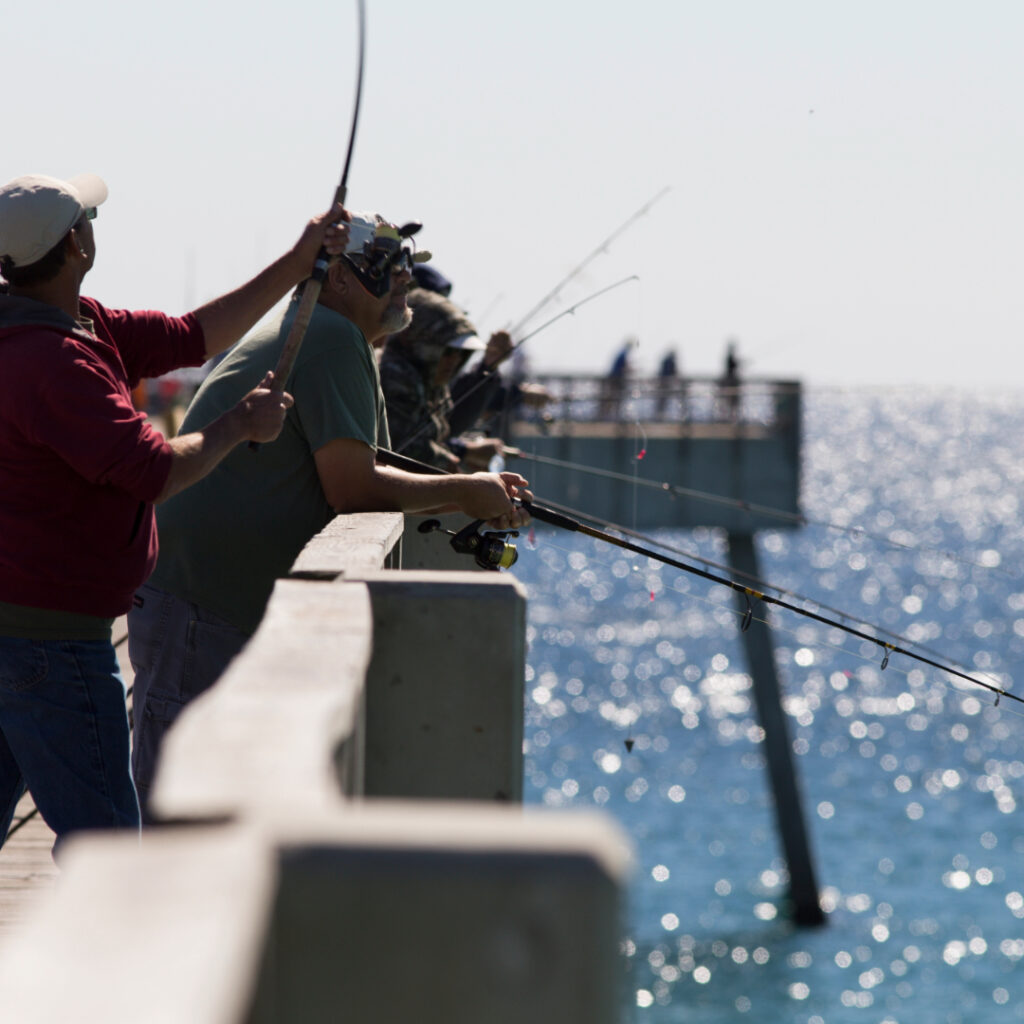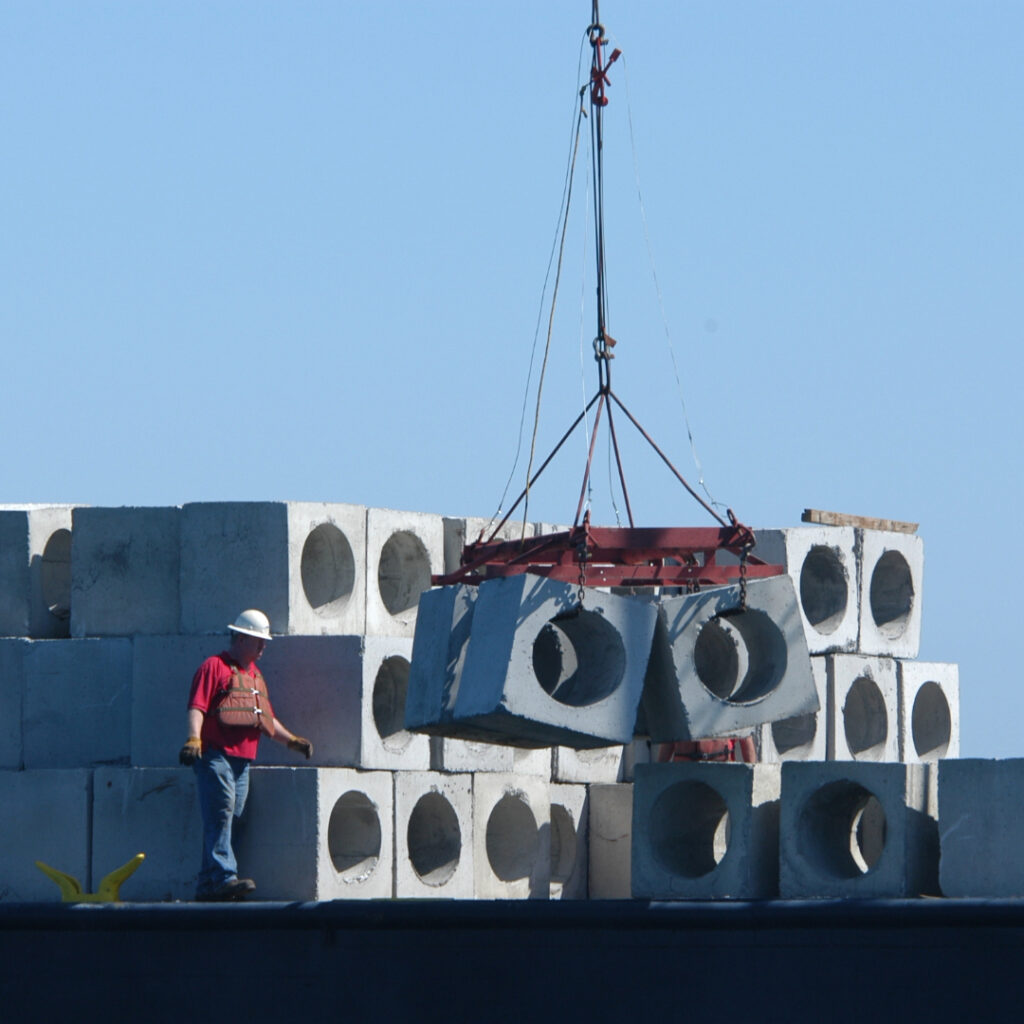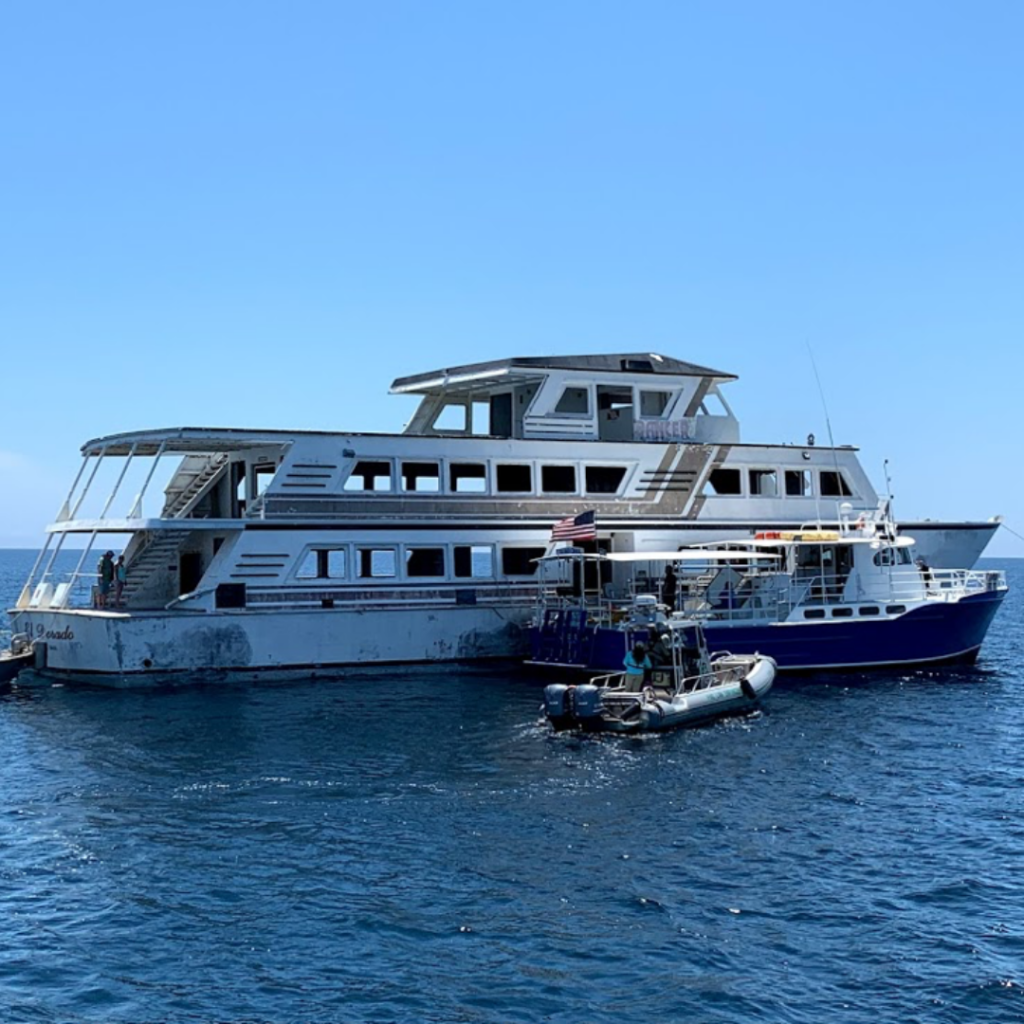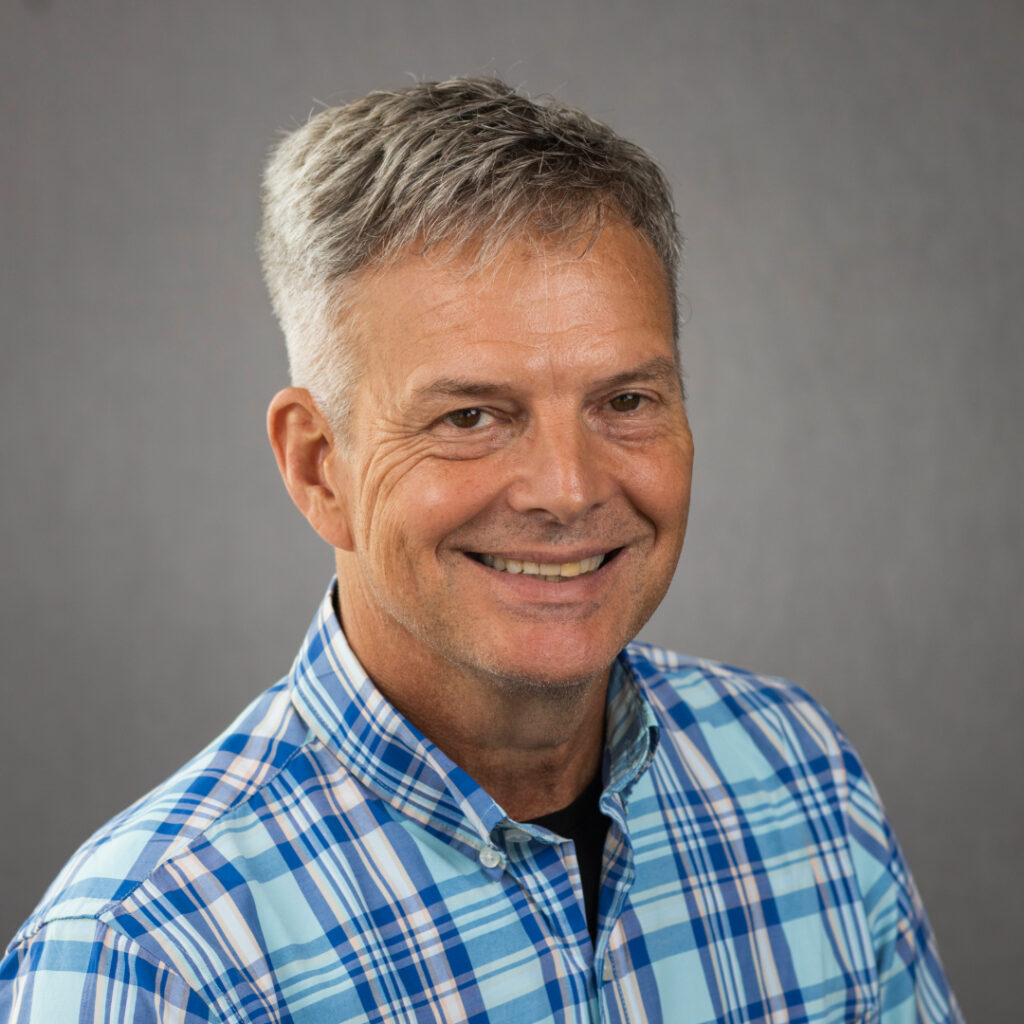
Image by Tyler Jones, UF/IFAS.
Nestled along the white-sand shores and clear waters, the Emerald Coast is a haven for anglers, due to its unique underwater topography including steep drop-offs and submerged cliffs. This allows for larger fish to swim closer to shore, making it a prime destination for sportfishing. It then comes at no surprise that even “Luckiest Fishing Village in the World” sits along Northeast Florida’s coast (Destin, Florida)! To enhance even a bit more of angler’s luck – in the coming weeks, near the Destin–Fort Walton Beach area – one of the largest artificial reef deployments ever will take place: the sinking of the SS United States, a 1950s ocean liner.
Artificial reefs are largely deployed to enhance recreational fishing and diving in areas located along the Gulf coast. They also relieve pressure on natural coral reefs, and provide ecosystem services that protect our coastlines.
“We can create artificial reefs in different locations for different purposes, whether that’s to address shoreline erosion in some cases, soften and increase the complexity of structures along seawalls and complement living shoreline projects near shore,” says Scott Jackson, Florida Sea Grant’s UF/IFAS Regional Specialized Extension Agent in Bay County.
Over the past 20 years Jackson supported more than 100 artificial reef projects across Bay, Okaloosa, and Walton counties—including small patch reefs, concrete modules, and large-scale ship sinking. Similar to FSG UF/IFAS Taylor County Extension Agent – Victor Blanco – Jackson serves as liaison between local government, community partners, and state and federal agencies like FWC, FDEP, and the U.S. Army Corps of Engineers, supporting the implementation of artificial reefs that align with regulatory guidelines and permit conditions. Some of his responsibilities include:
- Identifying appropriate reef materials and deployment sites with stakeholders.
- Supporting permit applications and compliance and oversight of Large Area Artificial Reef Site Permit (LAARS) in Bay and Okaloosa County team.
- Leveraging grants and stakeholder contributions to expand reef footprint through programs like NRDA and RESTORE.

Deployment of Lindberg cubes, artficial reef. Image by Keith Millie, FWC.
A creative demonstration of artificial reefs—beyond their structural design—is the meaningful involvement of community members. Like the artificial reef monitoring program, the refurbishing, construction, and deployment process of artificial reefs takes a team…or a village! Jackson coordinated post-storm recovery efforts to repurpose storm impacted vessels into prized artificial reefs.
Hurricane Michael in 2019, the vessel – El Dorado – was left aground in shallow waters. The Bay County Board of County Commissioners (BOCC) acquired the El Dorado, January 2019 through negotiations with vessel owners and agencies responsible for recovery of storm impacted vessels. The El Dorado was righted and stabilized, then transported to Panama City’s St Andrews Marina by Global Diving with support from the Coast Guard and Florida Fish and Wildlife. Hondo Enterprises, was awarded a contract to complete the preparation and deployment of the vessel for use as an artificial reef.
“Reefing the El Dorado provides new recreational opportunities for our residents and tourists, and delivers support for Bay County’s fishing and diving charters continuing to recover after Hurricane Michael,” says Jackson. “Several local dive charter captains even assisted in the towing and sinking of the El Dorado.”
He played a supporting role in the Eastern Shipbuilding reef project. This initiative, launched in Fall 2022, was a collaboration between Eastern Shipbuilding Group (ESG) and the Bay County Artificial Reef Association (BCARA). Welding students from Wakulla High School, Wewahitchka High School, Port St. Joe High School, Haney Technical College, and Chipola College all contributed to the effort. Jackson worked closely with the team on inspections and coordinated the final deployment, leading to the successful deployment of four artificial reefs in federally permitted LAARS B area in Spring 2023.

Storm-impacted vessel, El Dorado, repurposed into an artificial reef. Image by Scott Jackson, Florida Sea Grant UF/IFAS.
In 2014, Dr. Bill Huth from the University of West Florida, estimated in Bay County the total artificial reef related fishing and diving economic impact was 936 jobs, $131.98 million in economic output, and provided $49.02 million in income. In other words, Bay County ranked #8 statewide in artificial reef jobs from fishing and diving and ranked #3 in the scuba diving economy .
Artificial reefs enhance the catchability of sportfish, including even invasive species such as lionfish – which have increased exponentially. The Emerald Coast Open is the largest lionfish tournament in the country. Last year, participants harvested over 18,000 lionfish.
One factor that may contribute to lionfish harvest – besides population growth, is their increase in targeted catchability!
“Some of the first fish that we see on our artificial reef are lionfish. Over the years that we’ve been putting out reefs, we’ve seen an increased number of lionfish. Now, we have seen the number of lionfish stabilize and, in some cases, reduced. That can be attributed just to general ecology, as things adapt to the naturalization of lionfish, a robust group of people that usually are diving that go out and target lionfish.”
Reefing the El Dorado provides new recreational opportunities for our residents and tourists, and delivers support for Bay County’s fishing and diving charters continuing to recover after Hurricane Michael.
Scott Jackson
Considering the various types of artificial reefs and its impacts, it is important to consolidate all data and research for education and communications products that will support further artificial reef initiatives.
Regional reef workshops—first organized by John Stevely in the 1980s—laid the foundation for collaboration among reef coordinators, researchers, industry professionals, and other stakeholders. These workshops have become vital forums for sharing new research, providing updates, and informing statewide artificial reef strategies. Since 2018, Florida Sea Grant has hosted three regional planning workshops, engaging 154 resource managers and county-based reef coordinators.

Scott Jackson, Florida Sea Grant UF/IFAS Bay County Extension. Image by UF/IFAS.
Over the years, Jackson has led educational workshops and presented at national, state, and regional symposia. He contributed a chapter to the American Fisheries Society (AFS) Artificial Reef Symposium book (San Francisco, 2008), and later collaborated with Florida Sea Grant Communications to archive presentations from the 2017 AFS symposium in Tampa. Jackson also collaborated with Bay County’s Coastal Resources Coordinator to develop the Bay County Artificial Reefs Website, which was showcased at the 2023 National Extension Technology Community Conference at Penn State.
As he nears retirement, Jackson reflects on the creativity and problem-solving that have defined his work in artificial reef development.
“One example of the unconventional decisions we’ve made involved evaluating repurposed chicken transport containers as reef materials,” says Jackson. “At the time, there was skepticism among researchers and managers. I partnered with researchers at Florida Atlantic University (FAU), who conducted corrosion testing under controlled marine conditions. The data showed the structures were durable, with a life expectancy of 10–15 years.”
“It shows how Extension Agents actively seek out and apply valuable research findings in the real world—even when there’s still some uncertainty about how things will perform over time.”
In the coming weeks, Scott Jackson will embark on his retirement journey, while the SS United States, will voyage to the Gulf Coast near the Destin-Fort Walton Beach for its deployment. With questions circulating about the deployment process, environmental impacts, and the steps taken to transform the ship into a habitat, tune into the last month’s Science Friday episode, to learn from the expertise of Florida Sea Grant’s Scott Jackson.